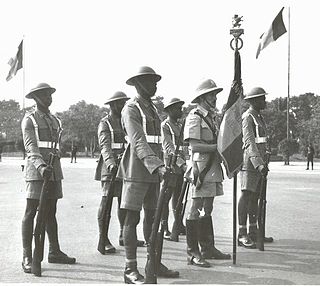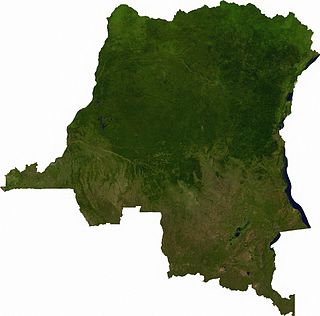
Marburg virus disease is a severe illness of humans and non-human primates caused by either of the two marburgviruses, Marburg virus (MARV) and Ravn virus (RAVV). MVD is a viral hemorrhagic fever (VHF), and the clinical symptoms are indistinguishable from Ebola virus disease (EVD).

The family Filoviridae, a member of the order Mononegavirales, is the taxonomic home of several related viruses that form filamentous infectious viral particles (virions) and encode their genome in the form of single-stranded negative-sense RNA. Two members of the family that are commonly known are Ebola virus and Marburg virus. Both viruses, and some of their lesser known relatives, cause severe disease in humans and nonhuman primates in the form of viral hemorrhagic fevers. All filoviruses are Select Agents, World Health Organization Risk Group 4 Pathogens, National Institutes of Health/National Institute of Allergy and Infectious Diseases Category A Priority Pathogens, Centers for Disease Control and Prevention Category A Bioterrorism Agents, and listed as Biological Agents for Export Control by the Australia Group.

Orientale is one of the eleven former provinces of the Democratic Republic of the Congo. The province lay in the northeast of the country. It bordered Équateur to the west, Kasaï-Oriental province to the southwest, Maniema to the south, and North Kivu to the southeast. It also bordered the Central African Republic and South Sudan to the north, and Uganda to the east. The provincial capital is Kisangani.

The genus Marburgvirus is the taxonomic home of Marburg marburgvirus, whose members are the two known marburgviruses, Marburg virus (MARV) and Ravn virus (RAVV). Both viruses cause Marburg virus disease in humans and nonhuman primates, a form of viral hemorrhagic fever. Both are Select agents, World Health Organization Risk Group 4 Pathogens, National Institutes of Health/National Institute of Allergy and Infectious Diseases Category A Priority Pathogens, Centers for Disease Control and Prevention Category A Bioterrorism Agents, and are listed as Biological Agents for Export Control by the Australia Group.

Viral hemorrhagic fevers (VHFs) are a diverse group of animal and human illnesses in which fever and hemorrhage are caused by a viral infection. VHFs may be caused by five distinct families of RNA viruses: the families Arenaviridae, Filoviridae, Bunyaviridae, Flaviviridae, and Rhabdoviridae. All types of VHF are characterized by fever and bleeding disorders and all can progress to high fever, shock and death in many cases. Some of the VHF agents cause relatively mild illnesses, such as the Scandinavian nephropathia epidemica, while others, such as Ebola virus, can cause severe, life-threatening disease.

The Force Publique was a gendarmerie and military force in what is now the Democratic Republic of the Congo from 1885, through the period of Belgian colonial rule. The FP was retitled as the Congolese National Army or ANC in July 1960 after independence.

Isiro is the capital of Haut-Uele Province in the northeastern part of the Democratic Republic of the Congo. It lies between the equatorial forest and the savannah and its main resource is coffee. Isiro's population is estimated at approximately 182,000. Most people speak Lingala, but Swahili is not uncommon.
The Logo people or Logoa (plural) are an ethnic group of Nilotic origin who traditionally live in the north-east of the Democratic Republic of the Congo, western Uganda, and southern South Sudan. There are believed to be more than 200,000 people who identify as ethnically Logo of whom most live in the Congo's Faradje Territory, a remote region in Haut-Uélé Province, where they form the ethnic majority. Logo people also live in Watsa and Aba, both also in Haut-Uélé, and in Yei in South Sudan.

Articles related to the Democratic Republic of the Congo include:
The species Bundibugyo ebolavirus is the taxonomic home of one virus, Bundibugyo virus (BDBV), that forms filamentous virions and is closely related to the infamous Ebola virus (EBOV). The virus causes severe disease in humans in the form of viral hemorrhagic fever and is a Select agent, World Health Organization Risk Group 4 Pathogen, National Institutes of Health/National Institute of Allergy and Infectious Diseases Category A Priority Pathogen, Centers for Disease Control and Prevention Category A Bioterrorism Agent, and is listed as a Biological Agent for Export Control by the Australia Group.
The species Sudan ebolavirus is a virological taxon included in the genus Ebolavirus, family Filoviridae, order Mononegavirales. The species has a single virus member, Sudan virus (SUDV). The members of the species are called Sudan ebolaviruses.

Marburg virus is a hemorrhagic fever virus of the Filoviridae family of viruses and a member of the species Marburg marburgvirus, genus Marburgvirus. Marburg virus (MARV) causes Marburg virus disease in humans and nonhuman primates, a form of viral hemorrhagic fever. The virus is considered to be extremely dangerous. The World Health Organization (WHO) rates it as a Risk Group 4 Pathogen. In the United States, the NIH/National Institute of Allergy and Infectious Diseases ranks it as a Category A Priority Pathogen and the Centers for Disease Control and Prevention lists it as a Category A Bioterrorism Agent. It is also listed as a biological agent for export control by the Australia Group.
Ravn virus is a close relative of the much more commonly known Marburg virus (MARV). RAVV causes Marburg virus disease in humans and nonhuman primates, a form of viral hemorrhagic fever. RAVV is a Select agent, World Health Organization Risk Group 4 Pathogen, National Institutes of Health/National Institute of Allergy and Infectious Diseases Category A Priority Pathogen, Centers for Disease Control and Prevention Category A Bioterrorism Agent, and listed as a Biological Agent for Export Control by the Australia Group.

Durba is a gold mine in the Haut-Uele Province of the Democratic Republic of the Congo. It lies within the Kilo-Moto greenstone belt. As of 2011 a joint venture between AngloGold Ashanti and Randgold Resources was actively developing a concession centered on this mine.

Watsa Territory is an administrative area in the Haut-Uele province of the Democratic Republic of the Congo. The administrative center is the town of Watsa.

Faradje is a town in the Haut-Uele province of the Democratic Republic of the Congo and is the administrative center of Faradje Territory. It lies on the Dungu River.

Faradje Territory is an administrative area in the Haut-Uele Province of the Democratic Republic of the Congo. The main town is Faradje, lying on the Dungu River.

Bas-Uélé is one of the 21 new provinces of the Democratic Republic of the Congo created in the 2015 repartitioning. Bas-Uélé, Haut-Uélé, Ituri, and Tshopo provinces are the result of the dismemberment of the former Orientale Province. Bas-Uélé was formed from the Bas-Uélé district whose town of Buta was elevated to capital city of the new province.

Haut-Uélé is one of the 21 new provinces of the Democratic Republic of the Congo created in the 2015 repartitioning. Haut-Uélé, Bas-Uélé, Ituri, and Tshopo provinces are the result of the dismemberment of the former Orientale province. Haut-Uélé was formed from the Haut-Uélé district whose town of Isiro was elevated to capital city of the new province.










